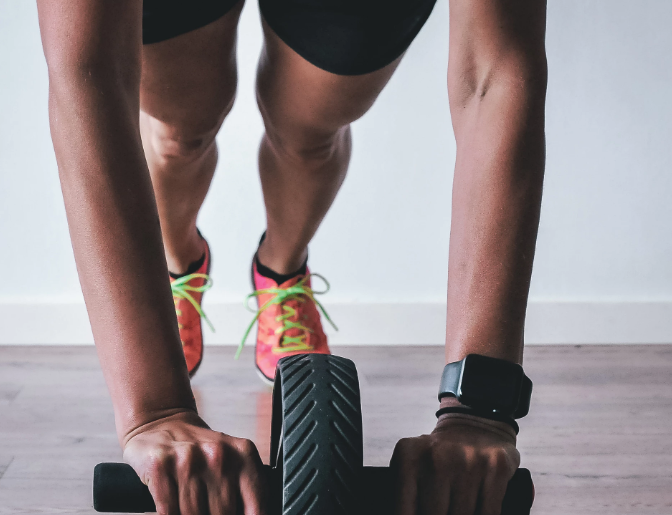Table of Contents
Hiking is one of the most grueling “leisure” activities you can take part in. It pumps the blood through your legs, gets you gasping for air, and rubbing your feet when you’re finished. Although it is tough, hiking can be one of the most rewarding activities you can do.
Walking through the wilderness, smelling the roses, and stepping over rocks and roots to reach your final destination envokes feelings of gratitude and pride. It is also a great way to stay in shape. That being said, you don’t want to go into a hike having spent the last few weeks sitting on the couch eating Cheetos. Especially for a long one.
Beng in shape before you go on a long hike can really help you enjoy your activity they way you want to. If you aren’t prepared, you may spend the majority of the time wishing you were curled up in the tent instead of testing your limits. On long hikes, your bones will ache, your muscles will burn, and your heart will pound.
Not to mention you may be covered in bruises and blisters along the way. For these reasons, it is important and useful to be prepared ahead of time for the physicality of hiking. In this article, we are going to talk about some of the ways you can get in shape for a long hike.
First Things First
The main goal you should have when getting in shape for a long hike is to work on your cardio and joint strength. Hiking takes a toll on your knees, hips, and ankles. The simplest way to prepare is to walk. Walking is one of the healthiest ways to improve your cardiovascular health while giving your joints, bones, and muscles a solid foundation from which to build on.
If you live a fairly sedentary lifestyle, you can start by walking for 30 minutes a day. Making it part of your routine can be really helpful. Walking as soon as you wake up, or right after you finish lunch can help you make it an easy part of your routine.
Walking will build the foundation, and when you’re hiking, you’re going to be doing a lot of it. Generally, on long hikes, you will have a heavy bag on your back s well. In some cases, you will have porters (donkeys, horses, camels) carrying the heavier items. For the instances that you have it all on your back, you’re going to want to be used to walking with a little bit of weight.
You can do this by taking your backpack and filling it with anything that will put a bit of resistance on your back and going for a walk around your house. Alternatively, if you have access to local hiking trails, going for short hikes after work with the bag on your back can really get you in the hiking groove.
This will prepare our body and your mind for what will come later. Most backpacks for long trips will weigh between 30-40 pounds. The goal is to keep it as light as possible, but if you want to carry extra items, being physically ready will offer you more wiggle room.
Hike Distance vs Training Distance
Your long hike will most likely be longer than the distance you will regularly be walking while you’re training yourself for it. Mostly that’s because not a lot of people have time to walk 10-25km a day after finishing the daily duties. A good goal to have is to be able to walk 5km a day comfortably for at least 3-5 days in a row.
If you can do so with the bag on your back even better. And, if you can do 7-10km a day with the bag on your back, double better. Remember that when you are on a long hiking trip, you will be hiking long distances every day. So being able to do slightly shorter distances consistently will give you a reference point.
25km can seem like a lot if you only walk about 250m on a normal day. The overall goal here is to implement consistency. You want your body to get used to consistently being active and having a goal to accomplish on a daily basis, no matter how much it is.
Hardcore Advice
If you want to take things to the next level, here are some ways you can prepare your body to handle the impact of hiking. Most of your stress will be on your legs hips, core, and shoulders. You can train these parts of your body by doing weighted squats/squat jumps, pushups, and pull-ups, sit-ups and planks, and going for long jogs.
If you are a hardcore hiker, you will likely already know how to do most of these hiking exercises, but if not, there are plenty of tutorials available on how to do so. This will get your body used to harder impact and will essentially overprepare your body for what is to come on the trail. Keeping your legs, glutes, back, and core strength will give you balance and confidence on the trail which will translate to more enjoyment.
Keep It Fun
The best way to make sure that you implement the proper preparation for your hike is to enjoy it. Pushing your comfort zone is difficult. It is important to give yourself an added reason for doing the hard work. This will help ensure that you get up for the task on a regular basis. You can do this in a number of ways.
Listen Up
Building a playlist of your favorite songs and listening while you’re preparing can give you a morale boost when you need it. You can download podcasts and audiobooks that put you in a mental groove that allows you to flow while you’re doing your walks. This can help take your mind off some of the more mundane aspects of the preparation phase and give you something to help inspire you along the way.
Treat Yourself
Having a small reward at the end is also a great way to encourage positive habits. If you are walking early in the morning and you love coffee, wait until you’re done your walk to have your coffee. It will give you something to look forward to. Or having a taste of dark chocolate or anything you really enjoy afterward can be a wonderful encouragement too. No matter what it is that you can use as a reward, use it to build a good habit. You’ll enjoy your reward much more if you work for it as well.
Partner Up
Having a friend or a family member along for the journey with you can be a great way to encourage healthy preparation habits. It gives you accountability and the enjoyment of another person’s company. Hiking is all about connecting with the real world around us. Connecting with another person by training with them every day can be a wonderful experience that not only gets you in better shape but also strengthens a relationship.
Conclusion
Hiking is really fun and rewarding. Learning how to get in shape for a long hike should be too. Hopefully, we have been able to provide you with the insight necessary to help you get in shape for a hike so you can truly enjoy the wilderness without gasping for air and rubbing your feet. The key is to build up a foundation and grow from there.
The intensity of your hike will determine the intensity of your training. If it is a really difficult hike with lots of elevation, work on those leg muscles and cardio capacity. If it is a flat hike, get your joints used to constant ground pounding. Get to work and we’ll see you on the trail!
If you liked the article, please leave your feedback.






